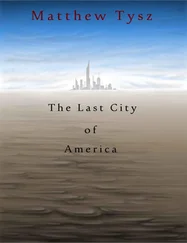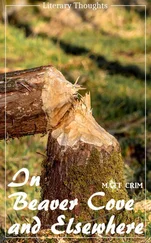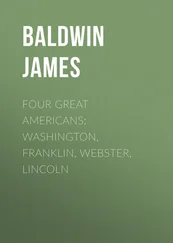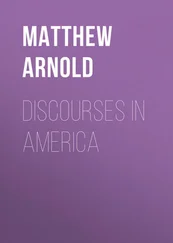1 ...6 7 8 10 11 12 ...17 I was standing next to Tom and Amy from Missouri. Like so many on the Mall they had timed their visit to the Nation’s Capital to coincide with the inauguration. They had not voted for George Bush. In fact, they didn’t much like him. But they really wanted to see an American President say the oath of office on the altar of democracy. Amy was wrapped up like an Arctic explorer and she and her husband had stood outside for two hours before the President started his speech. In the gap between hat and scarf I detected a tear running down a red cheek as the commander-in-chief promised to expand the horizons of liberty. When the national anthem was played everyone around me solemnly laid their right hands on their chests and sang along. I fumbled nervously with my scarf, wishing I had a large sign on my hat declaring: ‘This isn’t treason. I am a foreigner!’ Even if Americans don’t like the reality of the President who is running their country, they are head over heels in love with the idea of the presidency.
If America is a nation founded on the ideas of liberty and equality, Washington is the temple that keeps the ideas preserved in aspic. If those ideas had been embodied in a man or a woman he or she would be embalmed in an air-conditioned mausoleum, as Mao or Lenin once were. Instead, Washington offers a tour of monuments, memorials and institutions that hammers home the gist of America with relentless rhetorical force. There is nothing subtle about this. In fact, the only other capital I know where the official architecture feels this didactic is Beijing. The giant red banners in Tiananmen Square, extolling the virtues of the revolution and the victory of the proletariat, the huge portrait of Mao over the gate of the Forbidden City are as crass as the cult of liberty trumpeted by Washington. The equivalent of the workers’ delegation shuffling awe-struck through the Great Hall of the People is the thousands of school tours that pay homage to the Nation’s Capital and the founding fathers every week.
On a warm spring day, when the cherry blossom fills the trees around the Tidal Basin with pink cotton candy and when the air is filled with the sweet scent of jasmine, the Mall is a truly delightful place to hang out. I joined a group of eighth-grade teenagers from a high school in Pine Bluff, Arkansas, who were being shepherded around the capital by their history teacher. The students were a mixture of African American, Hispanic and Caucasian. Apart from one boy named Lester, none of them had been to Washington before. A meticulously scrubbed offspring of military parents, Harrison Howard had one of those American names that seem to work better backwards. He also had the annoying habit of interrupting the history teacher in the prime of his passion and the flow of rhetoric about our great founding fathers. Mr Wyeth sported a disconcerting goatee and a Paisley bow tie, which he twisted as if it was a wind-up key. He wore the kind of Stars and Stripes lapel badges that became the fashion in the White House after 9/11. He spoke fluently and passionately about the Gettysburg Address, the Bill of Rights and the numerous wars fought to defend liberty. ‘The war on terror started long before our homeland was attacked,’ he concluded at one point. His jaded audience fiddled longingly with their silent iPods.
There were twenty students in the group, only ten of whom had ever been outside their home state. What most of them really wanted to do – and who could blame them? – was to visit Disneyworld in Florida, see Hollywood or gawp at Times Square in New York. Instead they found themselves on a gruelling tour of Washington that sounded like an intensive refresher course in patriotism and sacrifice. On Monday they went to see the Jefferson Memorial, which is a splendid dome, modelled on the Virginia home of Thomas Jefferson. America’s first Secretary of State, drafter of the Declaration of Independence stands twenty feet tall, looking sternly towards the horizon or perhaps the kebab van on the other side of the Tidal Basin, one can’t be sure which. Then the class trekked over to the new World War II memorial, which is an unabashed celebration of the war that secured America’s dominance on the international stage. Gurgling fountains veil heroic quotations about the struggle for freedom. Every state is represented by a square granite column, festooned with copper wreaths. There are 4014 gold stars, each representing a hundred fallen soldiers, and two giant arches commemorating the victories in the Pacific and the Atlantic. For a monument that celebrates America’s victory over fascism it has an oddly square-jawed appearance. It’s as if Albert Speer had been asked to redesign Stonehenge.
The sheer number of war memorials is surprising. There are an astonishing 246 in Washington. Anyone who has ever led a battle charge is commemorated on a plinth somewhere in the city. They range from the puny bronze of Colonel Blassier, the commander of the 3rd Iowa Rifles, standing to attention like a stranded tourist looking for directions, to the extraordinarily tasteless ‘Flaming Sword’ near the White House. A seventeen-foot-high frilly phallus, covered in gold plate and clutched by two interlocking hands, it celebrates the sacrifices of the US Second Army Division in World War I. Stylistically it belongs to the Baghdad of Saddam Hussein. The uncanny thing about these war memorials is that many of them reflect the nature of the conflicts they commemorate. The World War II monument is unambiguously triumphant and celebrates a conflict that changed the rest of the world. The famous Vietnam Memorial is a stark black granite wall. This sombre slab bears the names of the fallen – all 56,400 of them – and forces you to remember a war that cowed America and gave birth to a syndrome. Even the students from Arkansas, exhausted by thoughts of sacrifice and nobility, were stunned into reverential silence as they ran their fingers over some of the engraved names. At first they didn’t even notice the bearded amputee who manoeuvred his wheelchair next to the shiny wall and rested his hand on a group of names. He sobbed quietly, oblivious to the other visitors, lost in the memories of some distant battle. When they did notice him many of the students looked embarrassed and walked away. Mr Wyeth was lost for words. Perhaps out of respect. Perhaps because Vietnam was a war that most Americans would rather forget. It strayed from the heroic narrative of the country’s other conflicts. It served no obvious purpose. The Vietnam Memorial is simple and intimate. The shiny black granite reflects your face, pockmarked by the engraved names. It remembers a failed war that had virtually no impact on geopolitics but tortured the individuals who fought in it and the soul of the nation that sent them there. It is a black slab devoid of heroism, bleating with introspection.
It stands in stark contrast to the Korean War Memorial which features life-sized soldiers traipsing up a mountain in the bitter Korean winter. Huddled against the freezing wind, these silvery figures look flash-frozen in a moment of history. What better monument to remind people of a largely forgotten, indecisive war that ended not in victory or defeat but in an inconclusive truce. Even today America is still officially at war with North Korea. The students liked this one. Looking at the petrified men they tried to imagine what battle felt like. Again Mr Wyeth was anxious to move on. He didn’t want his charges to get worn out before they reached the apex of his tour: the Iwo Jima Memorial on the other side of the Potomac in Virginia, perhaps the most famous of them all. It displays the six Marines who hoisted the American flag on the Japanese island of Iwo Jima during the Pacific war. It has inspired countless books and a Clint Eastwood movie and Mr Wyeth choked back the tears as he launched into a monologue about sacrifice and liberty. The monument, which has a commanding view over the Mall, was circled by a group of silver-haired veterans and their wives. They said nothing; one reached up to touch the cast-iron boot of a soldier.
Читать дальше
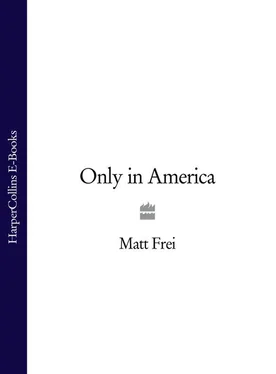
![Нил Уолш - Единственное, Что Имеет Значение [The Only Thing That Matters]](/books/393630/nil-uolsh-edinstvennoe-chto-imeet-znachenie-the-onl-thumb.webp)

